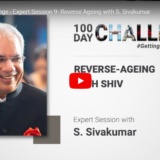Blending Innovation and Social Entrepreneurship, Changing lives

Here is a summary of my opening remarks during the panel discussion on “Blending Innovation and Social Entrepreneurship, Changing lives” at the Villgro Unconvention on 11th Dec 2009 (http://nxy.in/7rxhn)
1. What is “changing lives”?
To me, “changing lives” has two aspects and one outcome
(a) Align capacity of the people. Am saying “align” rather than the more commonly used term “build”, because I believe everyone has some sort of special capacity innately. Capacity could be social rights, economics knowledge, communication etc
(b) Enable unconstrained access to markets. Markets for information, knowledge, inputs (products and services) into production activity and access to output markets
so that
(c) everyone can fulfill their aspirations whatever they are, including a better quality of life!
2. Why do we still need to talk about “changing lives”, despite so many centuries of civilisation?
I will illustrate my arguments referring primarily to the context of rural Indian people (because that’s Villgro’s canvas, and that’s where my experience lies in any case), but many of these observations are relevant to all poor people.
Because of certain inherent and fundamental characteristics of rural people (especially farmers) and certain other challenges, their access to markets is constrained. Consequently all their hard work, innovation and risk are burnt in sheer survival rather than creation of wealth. Incidentally, in the same panel, Paul Polak described such people as “survival entrepreneurs”
I call some characteristics fundamental, because they are unlikely to change (to any significant effect) in the foreseeable future. They are:
(a) Fragmented Size: Each of the 120 million Indian farmers owns an average of just about a hectare-and-a-half of land. Consequently, they end up with weak bargaining power in any value chains they are part of. They end up buying any thing they buy at a very high retail price at the end of a long chain. CK Prahalad called this “Poverty Premium”. On the other hand, whatever they sell they sell at a whole sale price at the beginning of another long chain; receiving only a small share of the consumer Rupee as a result.
(b) Geographic Dispersion: These 120 million farmers live in some 600,000 villages spread across a large geography. As a result access to real-time information is difficult and cost of reaching goods becomes expensive.
(c) Heterogeneity: Besides the broader variations in soil types and climatic conditions across India, the individual farmers also differ from each other so much (eg. access to finance, cash flow needs, risk appetite, family labour and so on) that any generic solution is not going to be optimal for many. Personalisation of solutions is an imperative, but personalizing isn’t viable for any business when these people are fragmented and dispersed!
The challenges arising out of these fundamental characteristics are further compounded by inadequacies in the infrastructure. Infrastructure of three types. The more commonly known physical infrastructure viz. roads, power, telecom; also irrigation in case of farmers. Then the social infrastructure viz. education for competence building, health – a major reason for indebtedness in rural India. Finally, and most importantly, the still evolving institutional infrastructure viz. credit ratings, dispute resolution, commodity price risk management, farm yield risk management etc.
As a result of these fundamental characteristics and the infrastructure inadequacies, when the farmers access markets such as banks for loans, agri extension officers for farm management knowledge, mandis for selling agri produce etc their transaction costs are high; that is when they are actually able to access.
Otherwise they have to rely on middlemen in the villages who provide them all these services at one shop conveniently, but extract their pound of flesh by spinning a cycle of dependency and exploit it to their advantage!
In other words, these two options are like relying on the Devil or swimming through the Deep Sea to access the markets. What’s the outcome you then expect, except the world still looking for solutions to “change their lives”?
3. In this back drop, I propose that innovation along three vectors can make a difference and possibly hold a light at the end of the tunnel for these people:
(a) Technology: For relevant products (e.g. energy solutions – solar lights, communication solutions – mobile phones) at better value for money price points, and for remote access (information, knowledge, e-learning, health diagnosis & delivery) by side stepping or making up for infrastructure inadequacies
(b) Institutions: Fusing technology, social capital (making up the missing institutions and provide an alternative to the traditional middlemen e.g. Joint Liability Groups making up the missing credit appraisal mechanism; ITC eChoupal Sanchalak for facilitating value added access to Internet) and collaborative networks (that orchestrate an ecosystem to bring end-to-end solutions to the poor like middlemen, yet offer freedom of choice like the unbundled market institutions) to create more equitable markets
(c) New Business Models: Enmesh the interests of people and business (e.g. identity preserved supply chains in eChoupal system that raises the incomes of the farmers and increases ITC’s profits), and third party pays business models (leveraging the volume ala’ media business) for fiancial viability and scalability of the enterprises










